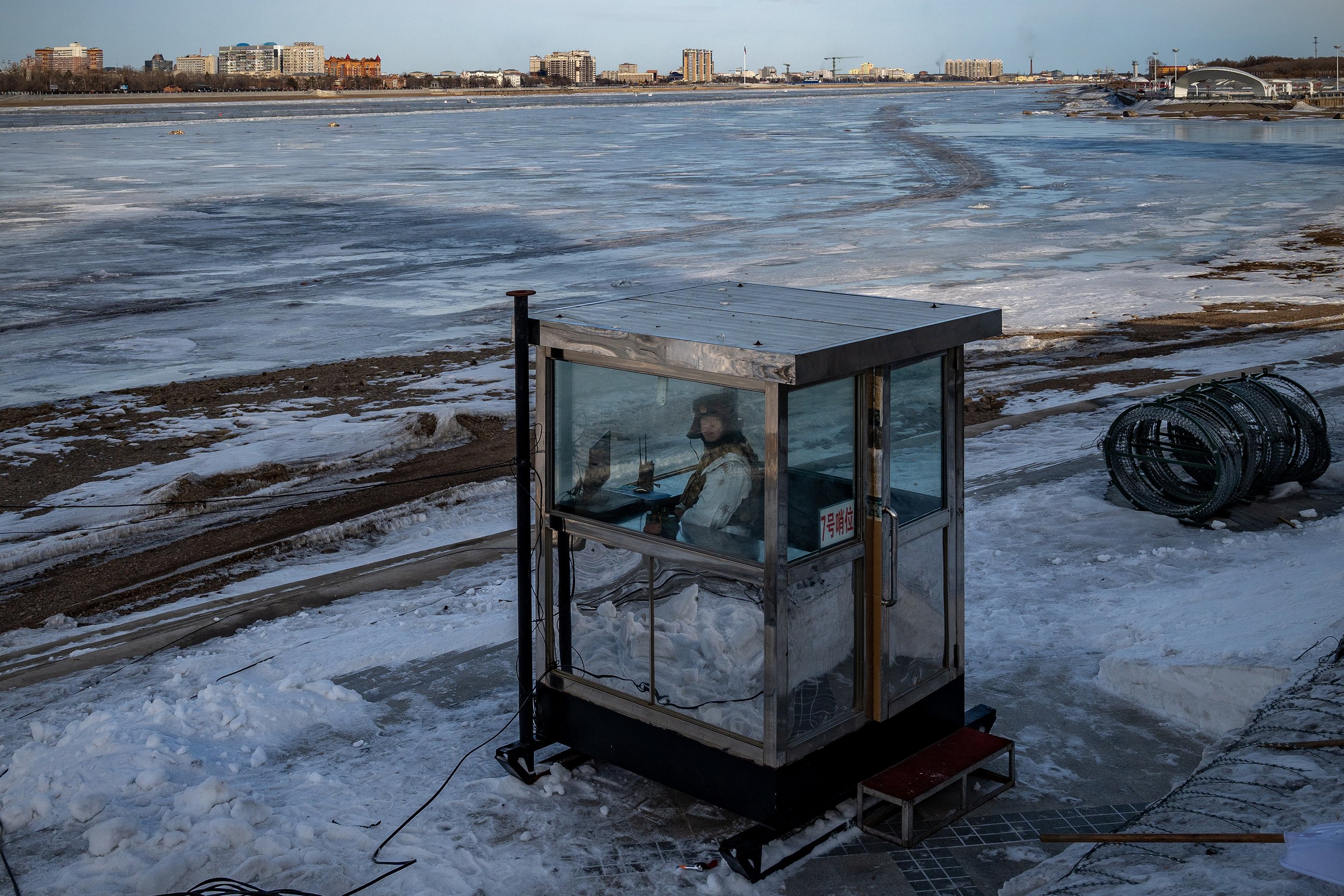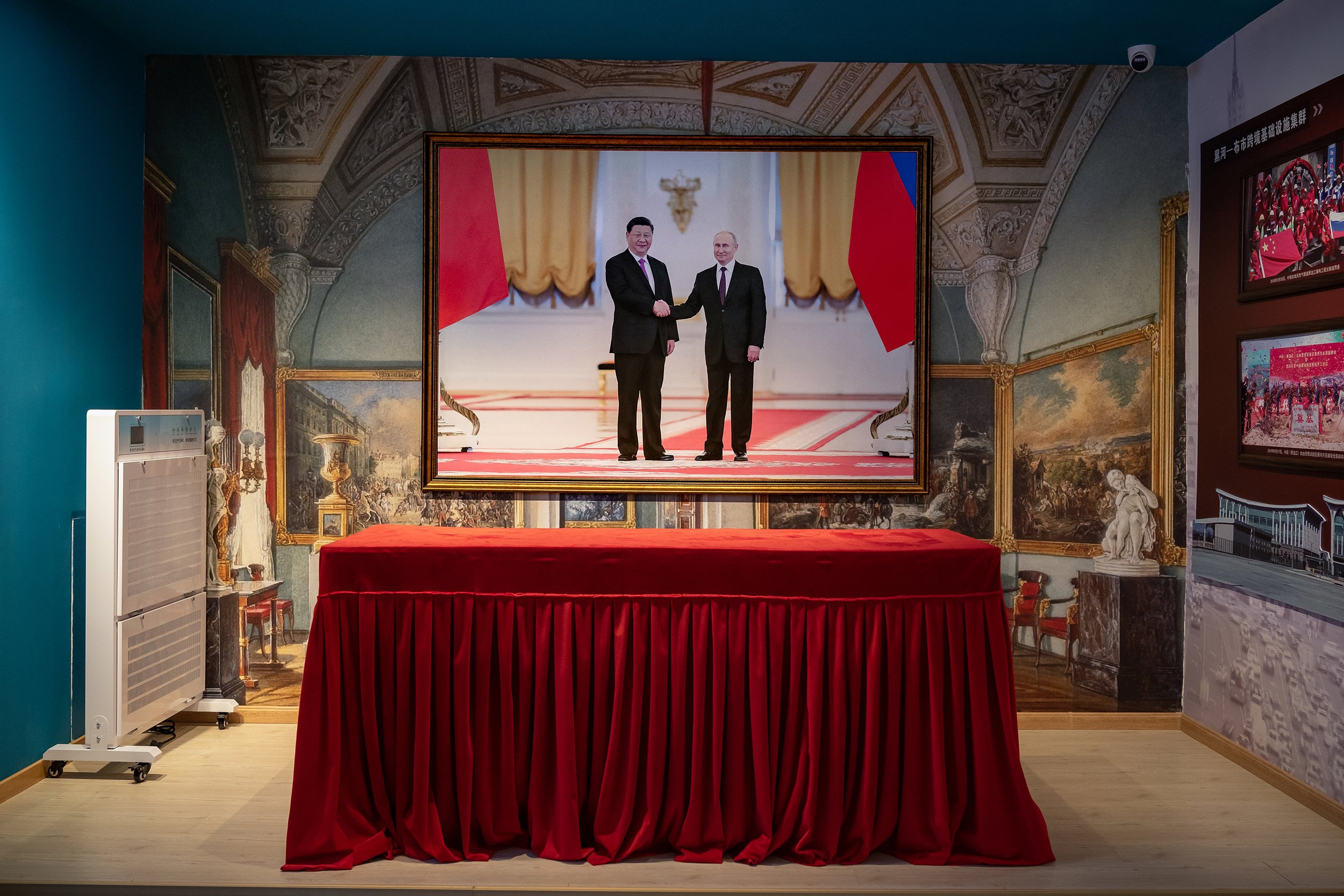FRIENDSHIP WITHOUT LIMITS ON THE SINO-RUSSIAN BORDER (2023)











A year after Russia’s invasion of Ukraine and the consequent imposing of sanctions from the West, trade with China has become vital for the Russian economy.
In the border city of Heihe, on the southern shore of the Amur River in China’s far north, the "friendship without limits" between the two countries is on full display. A newly built highway bridge, inaugurated in June 2022, connects Heihe with Blagoveshchensk, on the opposite side of the Amur. Long lines of China-made trucks are parked by the road leading to the bridge, ready for export. In the city centre, supermarkets sell Russian products, and several restaurants serve Russian food. The pipelines of Power of Siberia, that bring natural gas from Yakutia all the way down to Shanghai, enter the Chinese territory here. A photo of the two countries’ leaders shaking hands is displayed at a local memorial hall, but a trip to another museum some forty minute drive away, reminds us that Sino-Russian relations are much more complex and contradictory narratives often overlap in this remote place.
Russian people are banned from visiting the Aihui History Museum. Here, a wax replica depicts the signing of the Treaty of Aigun, 1858, when the Russian Empire annexed some 600,000 sq. km of land from the Qing Dynasty, during what is known in China as the century of humiliation: a period of time when China was subjugated by Western powers and Japan. The majority of the current border was established then, and two years later in 1860, when the Treaty of Peking was signed and the Russians took what's now known as the Primorski Krai, another 400,000 sq. km of Manchu land. Two treaties considered unequal by the Chinese, as the posture of the wax figures exhibited here clearly suggests. The museum’s main attraction is a semi-panorama painting, graphically illustrating the killings carried out by the Russians forces in response to Chinese Boxers’ attacks, during the anti-Chinese pogroms of July 1900.
These historical facts have periodically changed their importance, as cross-border relations have evolved over time, from the heyday of the communist brotherhood to the Sino-Soviet split when the two countries were on the brink of a nuclear war. With the end of the USSR, the issue was then settled, in 1991.
Now that Moscow and Beijing find themselves aligned against US hegemony, at this museum by the Amur River, China seems careful not to upset its neighbour. The friendship without limits holds for now, while an economically isolated Russia becomes increasingly dependent on its powerful neighbour.